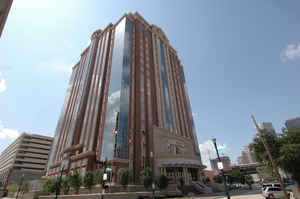Texas Counties
Texas is divided into two hundred and fifty-four counties, more than any other state. Texas was originally divided into municipalities, a unit of local government under Spanish and Mexican rule. When the Republic of Texas gained its independence in 1836, there were 23 municipalities, which became the original Texas counties. Many of these would later be divided into new counties. The most recent county to be created was Kenedy County in 1921. The most recent county to be organized was Loving County in 1931Harris County, Texas
Harris County Education, Geography, and History

Harris County is a county located in the state of Texas. Based on the 2010 census, the population was 4,092,459,making it the most populous
county in Texas and the third-most populous county in the United States. Its county seat is Houston, the largest city in Texas and
fourth-largest city in the United States. The county was founded in 1836 and organized in 1837. It is named for John Richardson Harris, an
early settler of the area.
Harris County is included in the Houston-The Woodlands-Sugar Land Metropolitan Statistical Area.
Etymology - Origin of Harris County Name
John Richardson Harris, an early settler of the future county
Demographics:
County QuickFacts: CensusBureau Quick Facts
Harris County History
Harris County is a county located in the US state of Texas. The county was founded on December 22, 1836 as Harrisburg County and Harrisburgh County. The name was changed to Harris County in December 1839. As of 2000 US Census, the county had a population of 3,400,578 (though a 2007 estimate placed the population at 4,011,475), making it the most populous county in Texas and the third most populous county in the United States. Its county seat is Houston
Handbook of Texas Online
Harrisburg County was formed by the First Congress on December 22, 1836. The lawmakers also named Andrew Briscoe
chief justice and the infant city of Houston the county seat and national capital (see CAPITALS). The county
encompassed the territory of the old municipality plus Galveston Island (the mainland was attached to Brazoria
County) until May 1838, when its modern boundaries were established. In December 1839, Congress changed the name to
Harris County, in honor of John R. Harris. The county briefly lost its northwest corner in 1841 when Spring Creek
residents tried to form a separate county. The first county court, convened in February 1837, was composed of the
chief justice (called the county judge after 1861), the sheriff, the clerk, and
two justices of the peace who served as associate justices. Voters in each militia precinct chose two justices of
the peace, and between 1837 and 1846 these men annually elected two of their body to serve as the two associate
justices on the county court. Later, with statehood and a new constitution, four county commissioners represented
the four precincts on the county court, and justices of the peace exercised their duties only within their
precincts. The Congress also established district courts for criminal and civil cases; the first session of the
Second District Court met in Houston in March 1837. This court is the forerunner of the Eleventh District Court
established after the Civil War. The criminal district court serving Harris and
Galveston counties began in 1867 and lasted until 1911, when each county formed its own criminal court. Since the
first log court building, the county has built four successive imposing courthouses on the courthouse square in
Houston. The 1911 structure still stands but is augmented by four major new buildings on separate blocks housing
courts, offices, and the jail. The county has acquired several older office buildings around the courthouse for
courts and offices More at
Margaret Swett Henson, "HARRIS COUNTY," Handbook of Texas Online (http://www.tshaonline.org/handbook/online/articles/hch07),
accessed January 24, 2016. Uploaded on June 15, 2010. Modified on June 25, 2015. Published by the Texas State Historical Association.
Geography: Land and Water
As reported by the Census Bureau, the county has a total area of 1,778 square miles (4,604 km2), of which,
1,729 square miles (4,478 km2) of it is land and 49 square miles (127 km2) of it (2.75%) is water.
Neighboring Counties
Bordering counties are as follows:
- Montgomery County (north)
- Liberty County (northeast)
- Chambers County (east)
- Galveston County (southeast)
- Brazoria County (south)
- Fort Bend County (southwest)
- Waller County (northwest)
Education
Colleges and universities
Four separate and distinct state universities are located in Harris County. The University of Houston is a nationally recognized Tier One
research university, and is the flagship institution of the University of Houston System. The third-largest university in Texas, the
University of Houston has nearly 40,000 students on its 667-acre campus in southeast Houston. The University of Houston-Clear Lake and the
University of Houston-Downtown are stand-alone universities; they are not branch campuses of the University of Houston. Located in the
historic community of Third Ward is Texas Southern University, one of the largest historically black colleges and universities in the United
States.
Several private institutions of higher learning-ranging from liberal arts colleges to a nationally recognized research university-are located
within Harris County. Rice University is one of the leading teaching and research universities of the United States and ranked the nation's
17th best overall university by US News & World Report.
Three community college districts exist with campuses in and around Harris County. The Houston Community College System serves most of
Houston. The northwestern through northeastern parts of the county are served by various campuses of the Lone Star College System, while the
southeastern portion of the county is served by San Jacinto College. The Houston Community College and Lone Star College systems are within
the 10 largest institutions of higher learning in the United States.







